If you have found this link then intuitively accept that you were meant to benefit – THIS IS A LENGTHY READ – PLEASE STAY WITH IT – IT’S WORTH IT AND SO ARE YOU AND THOSE YOU SUPPORT:
VFP/SSP is suitable for individuals at #0 and #1 states of stress – it is not suitable for those in a #2 or #3 state of stress – (our VFP/HRV experience is more suitable for this – and hopefully calms someone down to the #1 or #0 state so they may benefit from VFP/SSP).
For details of our trials and prices please click here.
VFP stands for Vibrational Frequency Programming – SSP stands for Safe and Sound Protocol:
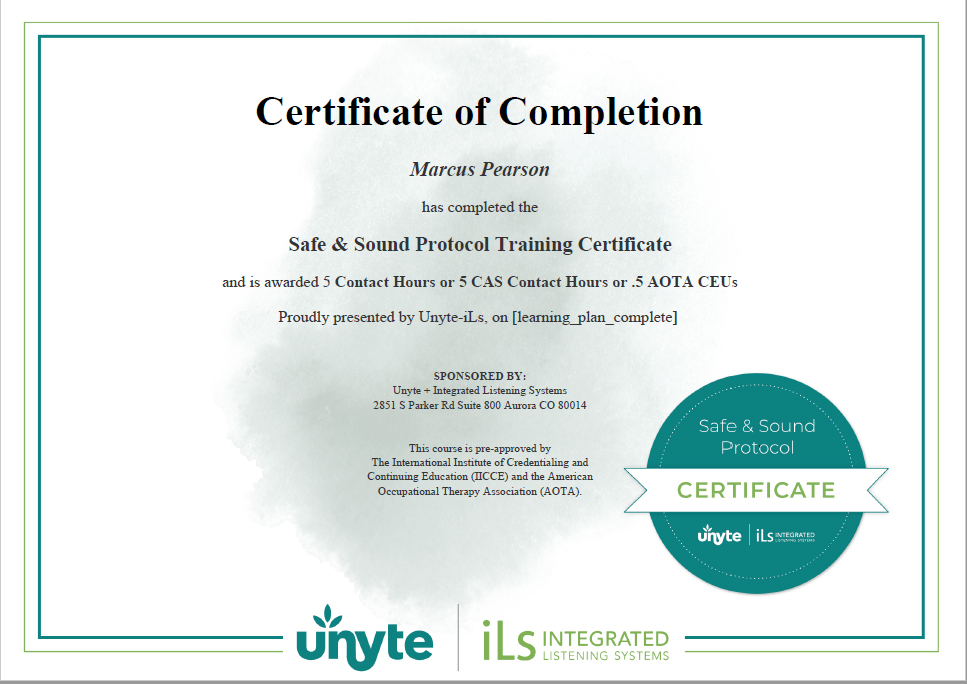
Marcus Pearson is a qualified SSP Therapist, trained and experienced in the practical and clinical applications of Polyvagal Theory as developed by Prof Stephen Porgess.
He uses SSP in conjunction with other modalities such as P.A.C.E. (including art, music, dance, and exercise) as part of Emotional Coaching.
This holistic approach utilises The Trust Technique (horse.and human whispering) and combines it with a polyvagal approach to somatic IFS (Internal Family Systems), and neuroplasticity nurturing (as per Dan Siegal’ strategies). More here.
He runs workshop’s and training on how to apply such insights on a practical basis. This is excellent if you have multiple individuals needing support, especially if they are at different locations – read on for more details.
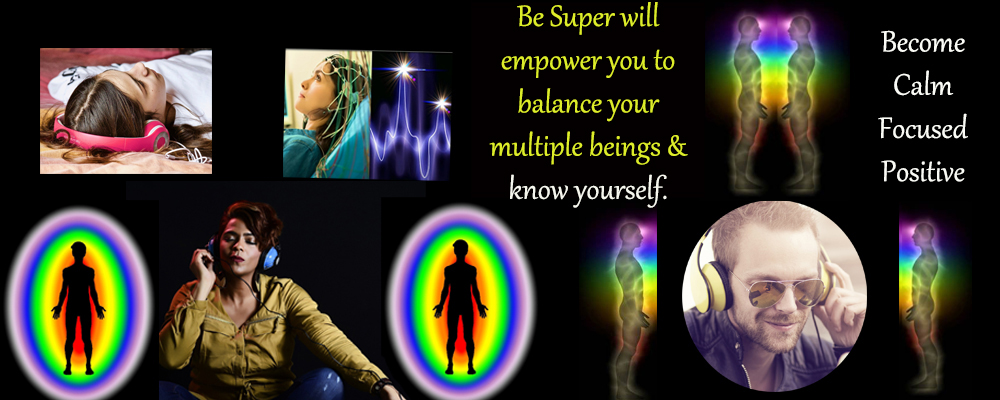
It seeks to develop self-resilience, curiosity and social engagement; and seeks to improve the way individuals interact with others.
Hence, we call it VFP/SSP – it is a different approach!
We do not refer to it or approach it as a therapy – it is a retuning experience!
It is delivered through – Trust, Safety & Relaxation; Sound Vibrations; Physical Activity & Creative Social Interaction – rather than CBT (Cognitive Behaviour Therapy). The principle of its approach is different from most ‘therapeutic approaches’; in that it initially approaches stress and trauma as a non-cognitive phenomena (we don’t seek to ‘overcome’ by thinking and talking about problems). We approach them as aspects of our autonomic nervous system (we seek to overcome them by activating the ‘vagal nerve’).
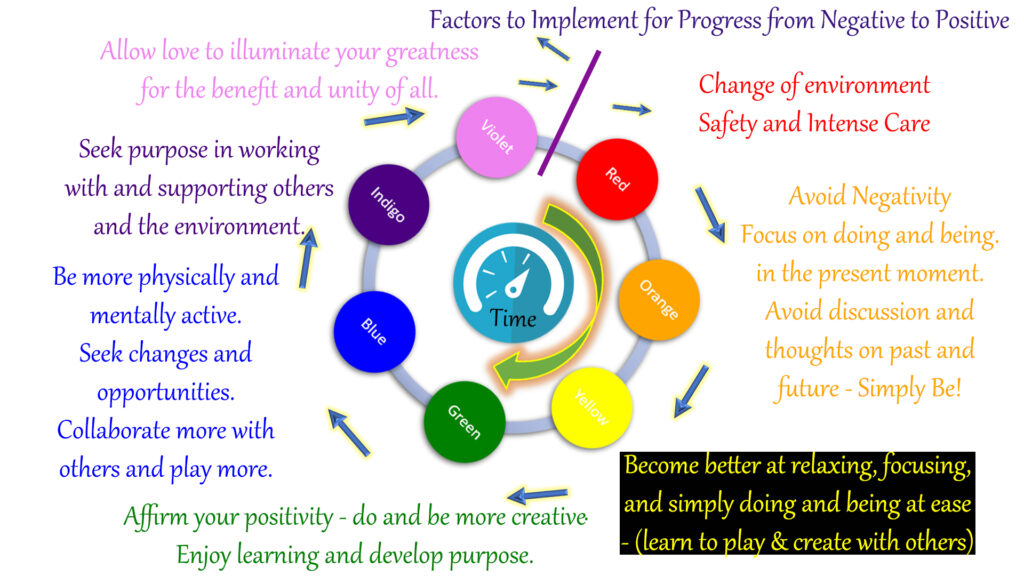
VFP has different stages as may be seen from the infographic below:
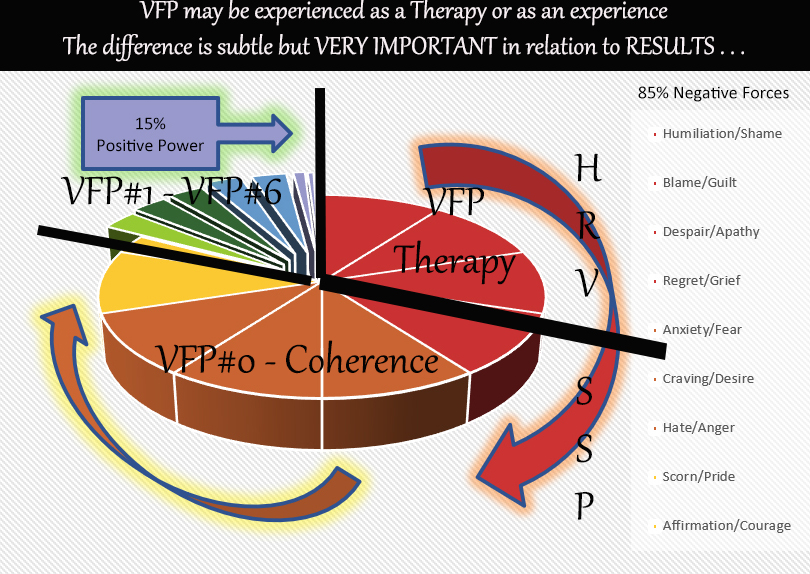
One single approach does not provide solutions for everyone, hence, we assess each individual before providing the correct experience for them to benefit. Moreover, we can train. guide and support staff to know which approach works best for an individual at any particular point of challenging behaviour. This is often essential because integrating past negative trauma and stress is an ongoing and untimely process – meaning, without awareness and support from everyone involved (on a 24 hour basis) the cumulative integration may not take place smoothly.
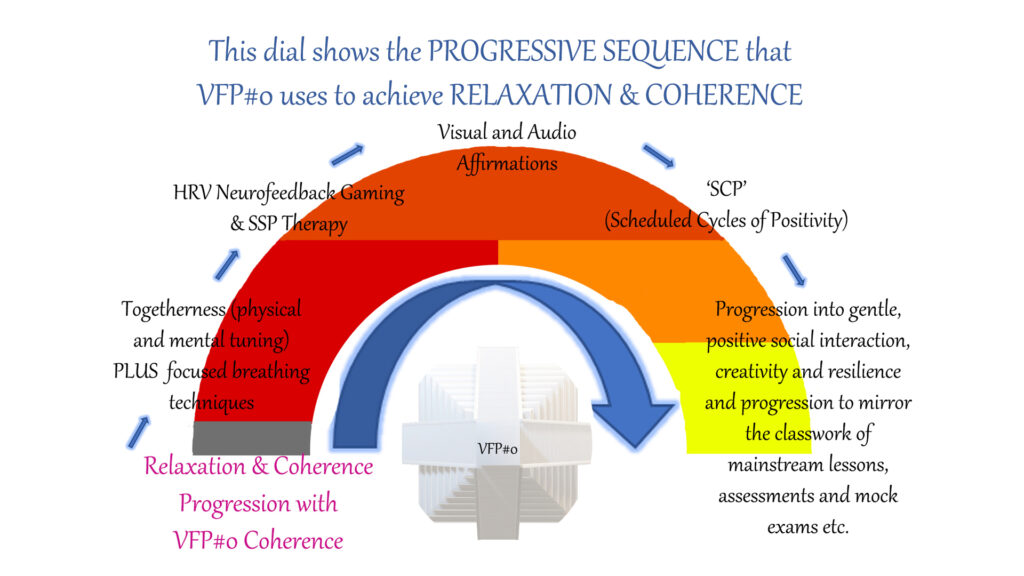
More specifically we seek to activate the parasympathetic nervous system of a person, rather than their sympathetic nervous system) – furthermore, staff can be trained to support others in multiple locations . . .
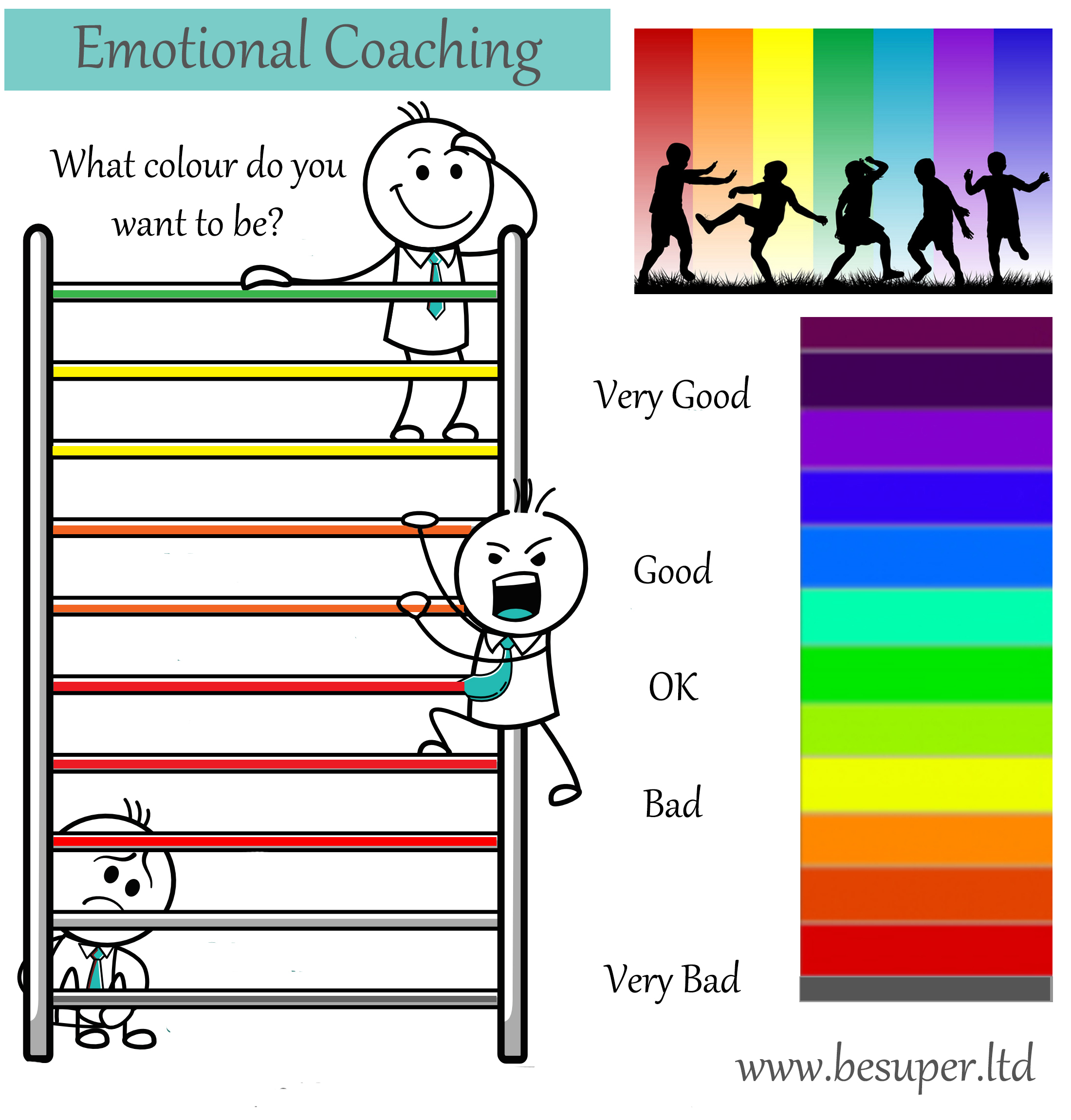
Who will benefit most from VFP/SSP retuning:
Anyone suffering from trauma, anxiety and stress will benefit (children, young people and adults).
It is also excellent for anyone suffering from auditory hypersensitivity and state regulation disorders, namely:
- eating or sleeping problems
- poor persistence of attention
- over or under-activity
- difficulty in adjusting to a new environment or routine
- delayed language development due to inadequate auditory processing
- visual-spatial processing difficulties
- motor planning problems
- Selective mutism
If you are looking more specifically for Therapeutic educational facilitation please click here.
MORE DETAIL (For those interested):
VFP/SSP retuning may be used to help overcome regulatory disorders that may have one of the following traits:
- The hypersensitive, fearful person who tends to overreact and needs a safe, quiet and unchallenged environment.
- The hypersensitive, stubborn and defiant person who has an enormous need to control because they are or have been extremely overstimulated.
- The hyporeactive, insensitive person who may appear challenging or aggressive due to their intense diversionary tactics or cravings.
- The self-absorbed, under-reactive person with low motor tone and low activity level who needs both reality checks and unchallenged stimulus.
- The person with motor planning problems, who is often labelled ADHD because of their inattentive appearance.
Safety:
N.B. VFP/SSP retuning is non-invasive and totally safe for the client. However, because it focuses on providing sound vibrations to the middle ear (and because the muscles of the middle ear are ‘fast twitch and tiny’ and often become very tired with the specific focus sounds) – this may lead to the client feeling tired afterwards or lead to a drop in energy. Therefore, good sleep, hydration and nutrition are important during the period of this retuning experience, and full co-operation and understanding of parents / partners and other supportive individuals is essential during the full SSP period – and for the following weeks (education on this is provided within our ‘therapeutic educational facilitation’).
Results may be noticed very quickly (within 3 – 10 day). However, it is essential this experience is supported with some additional physical, emotional and mental activity or project that runs at the same time and afterwards (preferably for at least 4 – 6 weeks to maximise and embed the benefits). Without this supportive aspect the benefits may be short term and be lost – this is a key part of the re-tuning!
All the above will be managed by Marcus Pearson.
Diving even deeper:
There is a part of our central nervous system known as the vagus nerve which regulates our heart rate, essentially serving as a brake pedal for our ‘autonomic/sympathetic’ heart rate, which is much higher. This “vagal brake” can be rapidly turned on through the use of diaphragmatic breathing – and we teach the client this technique, (HRV biofeedback technology is excellent for this) as part of a self – regulating resilience approach – this often results in an immediate calming response that often lasts for an hour afterwards.
Physical activity / movement may be used to ‘recognise’ to what extent the ‘vagal brake’ works. For those who have a ‘fully ‘tuned in vagal brake’; then physical exercise / movement will ‘manifest’ itself with more positive and socially co-operative behaviour. For those with a less tuned vagal brake; then physical activity / movement will manifest itself with more defensive / aggressive behaviour or activity focused concentration (with less social awareness). Such individuals will not project positive facial expressions and positive co-operative vocal prosody; this will result in others perceiving them as a little more anti-social, and they may be reluctant to engage socially or physically with them.
Laughing and smiling in a calm and relaxed manner ‘in tune with others’ is very appealing – and is also a sign that the vagal nerve is tuning in better.
Setting up the VFP/SSP experience:
An example of how it may be provided is provided below
- 10 x 30 min 1:1 sessions between the client and Marcus Pearson OR TRAINED STAFF (Times will vary – up to 5 x 60min).
- Each session is on a consecutive day and is set up within a safe and quite environment.
- The safety and reassurance of the environment, within which the Sound experience will take place is critical for success. Cues of safety and trust should prevail, before, during and after the sessions.
- The client should have joint ownership of the choices to provide the feeling of safety.
- A key part of safety is awareness and knowledge; and the client and their family/carers should have a short session explaining what the process is all about.
- This will include an awareness of the different states of ‘connection’ between the client and Marcus Pearson and between the client and their own thoughts and beliefs.
- The sessions start with a short period of learning on how to relax (possibly using the HRV self-calming video games).
- The client will then listen to the sound experience through headphones for 20 – 60mins
- No distractions will take place.
- The client may read a book, draw or colour or even do a jigsaw – or undertake all of these during the ‘sound session’.
- SSP may also be combined with our HRV breathing and relaxation sessions.
- After the session the client may engage in pre-agreed affirmations – this will be delivered with prosodic care and positive facial expression in conjunction with Marcus. If the client is not ready for affirmations, then further social interaction and possibly physical exercise would be positive. A PROJECT WITH PEERS WOULD BE EXCELLENT.
- None of this will be excessive; it is more for recovery and further stimulation of the vagal nerve and to assess the results, because – “You have to feel safe in order to communicate to another that you are safe”. ANY AND ALL FOLLOW ON TIME will take no more than 15-30 mins.
- Additional supportive information about nutrition, hydration and sleep, together with diaphragmatic breathing, will also be provided to the client and family. All of this supports self- resilience and coherence and resonance.
The above information is only a guideline – details are arranged on an individual basis.
Formal Client Support:
Ongoing changes will be measured in relation to the initial neuroception and the actual ’emerged properties’. This comparison will be used to measure to what extent the VFP/SSP has been effective. It will also highlight what follow up strategy might best be put in place to maximise continuing progress. This is explained in more detail below:
Our emotional and mental energy fields tune in to the intonation, stress and rhythm of any voices and sounds we hear and the facial expressions we see. This further tunes in to our physical being through the nervous system and manifests in how and why we behave. These ‘energy fields’ are also detected and ‘tuned in to’ by the energy fields of other people.
When our ‘energy fields’ feel safe and trust – for ourselves as an individual or from someone else; they function more appropriately, efficiently and naturally – meaning they need and want less outside support (they want and need to manage on their own).
When our ‘energy fields’ don’t feel safe and trust; they function less appropriately, less efficiently and unnaturally. During such periods, any additional workload on the physical, emotional and mental energy fields is going to create more harm than good and may lead to more negativity than positivity. When we seek to apply a ‘cognitive supportive approach’ to someone suffering from trauma and stress (by talking about their problems); then we are often doing so whilst their defensive system is in full swing. This is going to be a long winded and often fruitless endeavour – and is why CBT often lasts for many months or even years AND IS WHY WE DON’T USE IT. It also explains why this approach is also a little like a ‘fad diet’, in that the ‘problem’ comes back again once you lose the focus. VFP/SSP overcomes by nurturing the autonomic nervous system to self-regulate in a positive manner. It also teaches self regulation through ‘vagal activation techniques and approaches’.
There is a paradox in supporting those who ‘present as more challenging / distant’:
The paradox is, that whilst we feel compelled to provide more support and help with the ‘additional physical, emotional and mental workload we give them’ (often cognitive); such people need more time for their own nervous system to catch up from the ‘PREVIOUS over stimulation they experienced, whilst going through a period lacking in safety and trust.
What they need is to ‘feel more safety and trust in their physical, emotional and mental energy fields – this will then manifest in more positive physical being – THIS IS ACHIEVED BY DOING LESS!
Working within autonomic constraints:
Our body processes many variables on an automatic basis via our autonomic nervous system.
Our nervous system varies its ‘state of arousal’ and this impacts on ‘spontaneous social behaviour’. Different ‘states of arousal’ are required to manifest for different situations; and each different state is better suited to a different situation. Some states of arousal are more suited for physically active moments; whilst other states of arousal are better suited to more emotional or mental moments – such as social interaction or solving mental problems or being creative.
The most suitable state of arousal for any given moment or ‘state of being’ (physical, emotional or mental) is one that we say has an ‘optimal emerging state’. Each optimal emerging state is a neural platform that is best served to meet that which it feels is needed.
The 3 neural platforms or cycles of evolution include:
- The 3rd and most recent one deals with safety. When we feel safe, have trust and are unchallenged then we can be positive, creative and become more socially engaged for the benefit of self and we activate our Parasympathetic Nervous System. When someone is experiencing this cycle of behaviour then SSP is suitable for them.
- The 2nd one deals with danger. When we don’t feel safe, trust or are challenged, or when we specifically feel in danger, then we may hide, run away, put up a defence or fight. When someone is experiencing this cycle of behaviour then SSP is NOT suitable for them – instead we advise our VFP/HRV experience – as this better engages someone who has greater anxiety and stress; and in time leads them towards being capable of relaxing for at least 30 mins (until this point SSP is not possible).
- The 1st one deals with life threatening or hopeless situations. When we feel that no matter what we do, we are going to be unsafe, challenged or see no future; or a life-threatening situation – then we may shut down in some way. This may result in someone feinting or passing out; being physically sick; urinating/defecating; going into a coma; having a heart attack or experiencing a chronic illness or even a seizure.
- It mat also present as someone going through shame or humiliation, or despair – they may lack focus, lack energy, and just cant be bothered with anything. Guilt, anger, or frustration is a positive step with such people, however, it could be misunderstood as a strategy not working – hence, training for support staff would help.
- When someone is experiencing this cycle of behaviour then SSP is NOT suitable for them – instead we advise our VFP Therapy Experience – as this better engages someone who has greater anxiety and stress and in time leads them towards being capable of relaxing for at least 5-10 mins (until this point even HRV is not possible).
When we function from the 2nd or 3rd more defensive cycles, then we cannot listen or co-operate effectively to our own multiple beings / energy fields or to the energy fields of others.
Identification of that aspect that limits the ‘optimal emerging state’ provides a focus on what is needed for the individual.
What are the top 3 factors that influence behaviour and the emerging states:
Science and in particular, the clinical studies from Professor Stephen Porges on his Polyvagal Theory, now confirm that the 2 key factors that influence the ‘emerging states or properties’ are:
- the muscles of the human middle ear (through listening) and vocalization and
- activation of the larynx and pharynx (through talking).
A 3rd factor for influencing the ‘emerging properties’ is ‘physical activity / movement. When you are mobilized you are at less risk than when you are still and immobilized. Subsequently, part of the VFP/SSP re-tuning experience from Be Super incorporates some kind of gentle physical activity after the relaxed session – this serves to alleviate any previous tension, anxiety that lay dormant.
If these 3 key factors are not fully stimulated learning will be inhibited.
